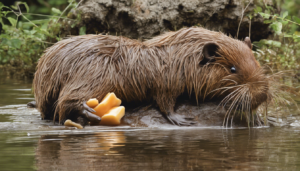In an age where consumers are increasingly curious about their food, one ingredient, castoreum, remains largely undercover. Sourced from beavers’ castor sacs, castoreum is often used in vanilla and raspberry flavorings. Despite its unique origins, many are unaware of its presence in daily foods.

Historically, castoreum has been utilized for its flavoring properties, particularly noted for its vanilla and raspberry taste profiles. This has led to the misconception that it is commonly used to flavor vanilla ice cream as a cheaper alternative to vanillin. However, due to its high cost compared to even the most expensive vanilla extracts, it is unlikely to be used extensively in modern food production. In earlier times, castoreum’s strong, musky odor derived from the beaver’s diet, which includes a range of phenolic compounds, was highly valued. This made it a sought-after ingredient in the food industry for enhancing flavor profiles, especially in vanilla and raspberry flavorings.
Castoreum, a yellowish substance from beavers’ castor sacs, is used by beavers to scent-mark their territory and waterproof their fur. Extracted using alcohol and aged for two or more years, it is occasionally used as a natural flavoring in foods. However, only about 1,000 pounds are used annually, indicating its minimal presence in the food supply. The FDA deems it generally safe for use, noting its strong, musky odor that enhances flavorings.
Historically, castoreum was valued for its vanilla and raspberry taste profiles. This led to the misconception that it is commonly used in vanilla ice cream as a cheaper alternative to vanilla extract. However, due to its high cost, it is unlikely to be used extensively in modern food production. British chef Jamie Oliver brought attention to its source, sparking discussion and decreasing its popularity despite FDA approval.
The FDA regulates castoreum under Title 21 of the Code of Federal Regulations, recognizing it as generally safe when used in typical food amounts. However, its safety in medicinal or topical applications remains undetermined. Pregnant or breastfeeding women are advised to avoid use due to insufficient safety information.
Castoreum is found in various products, including alcoholic beverages, baked goods, frozen dairy, and meat products, often labeled as “natural flavoring.” Despite its minimal use, public figures like Jamie Oliver have increased consumer awareness, leading to a demand for transparency in food labeling.
As castoreum’s use declines, the discussion highlights the importance of informed consumer choices and clear labeling practices. While considered safe, the shift in public perception underscores the need for transparency in ingredient sourcing, fostering a food culture that values quality and ethical transparency.